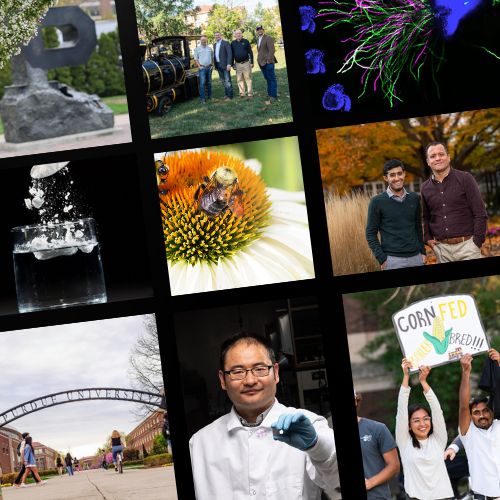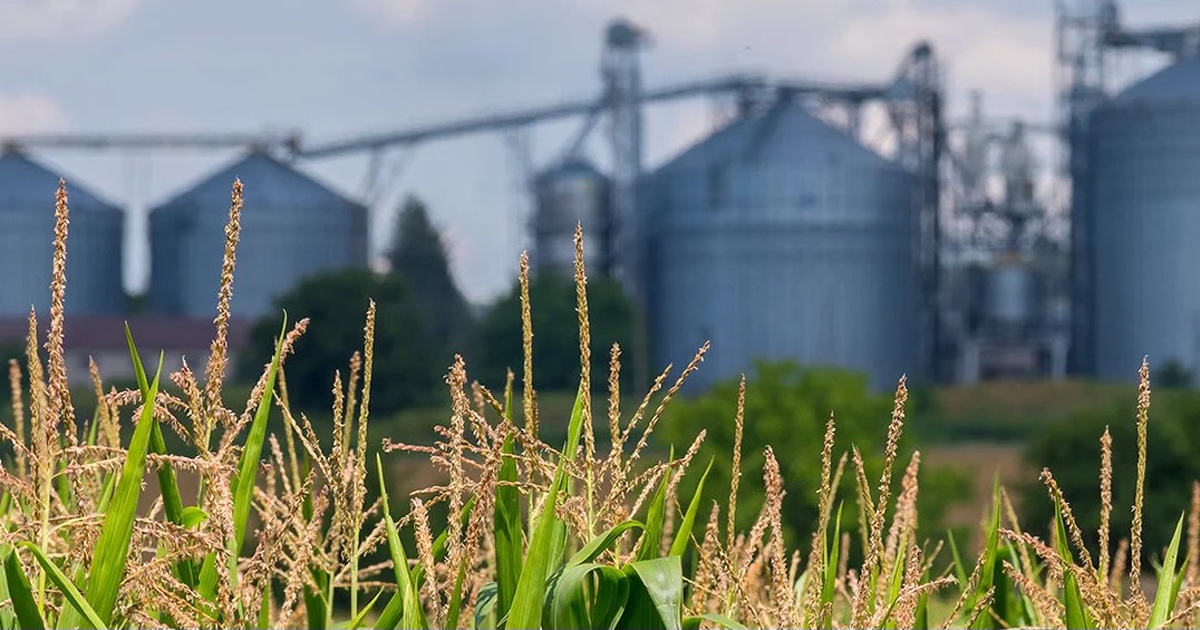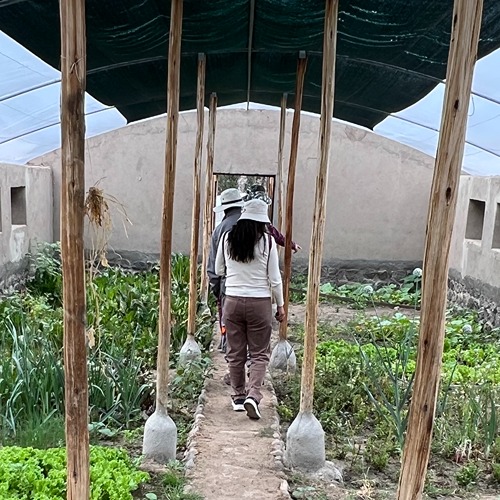Alex Wassgren - Graduate Ag Research Spotlight
It’s one thing to read about stuff in a journal or an article, it’s another thing to meet the author face to face
- Alex Wassgren, Agronomy
The student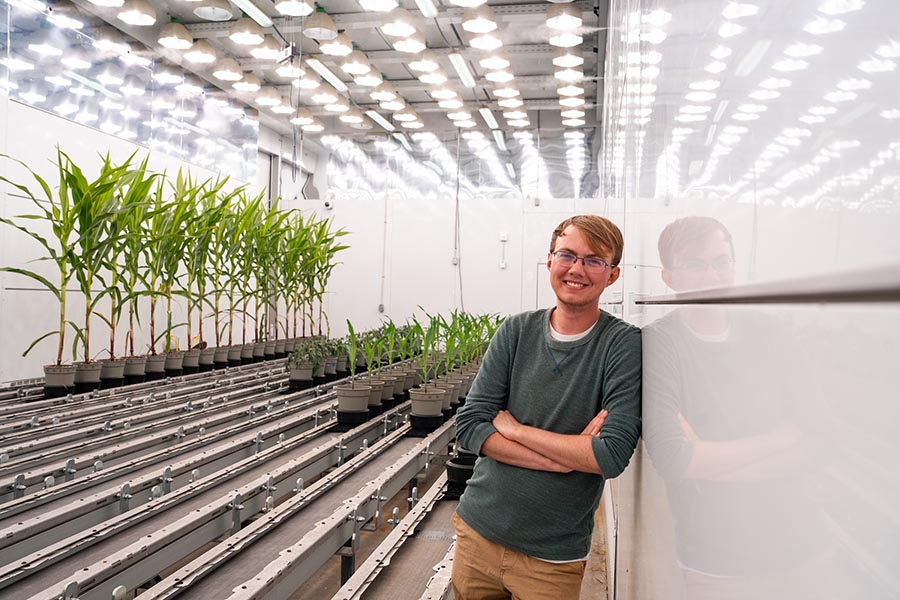
Alex Wassgren has a favorite core memory from growing up as a Purdue faculty kid in West Lafayette.
“Bug Bowl, 100 percent!” he says. “Going to the plant sales, doing the cricket spitting, looking at different bugs, the honey room – if you’ve got a kid who’s at all interested in the outdoors, Bug Bowl and Springfest are the way to get them hooked. I still go every year.”
His interest in agriculture was further piqued by attending a Purdue food science camp in middle school. Then, before his senior year in high school, he attended Purdue’s Molecular Agriculture Summer Institute, where high schoolers spend a week in the College of Agriculture learning the basics of lab research.
“I thought wow, this is really interesting,” Wassgren says.
He went on to major in plant science at Purdue, then stayed for his master’s degree in agronomy, which he expects to complete in August.
The research
Much of Wassgren’s research focuses on short-statured maize – corn plants that are 70 or 75 percent as tall as standard corn. While short-statured rice and wheat have been popular since the 1960s for their high yields and increased wind resistance, short-statured maize is only beginning to gain widespread attention.
“It’s pretty new, and there’s still a lot to uncover,” Wassgren says.
He’s done work on the short-statured maize’s growth and morphology and used it as a case study for high-throughput phenotyping, a way of assessing plants’ characteristics quickly and on a large scale.
“Traditionally, when we’re taking measurements by hand in the field, it takes a long time, and it’s very labor-intensive,” he says. “We’re looking to find technologies that allow us to do that faster and in a less hands-on way, using methods like estimating leaf area from photos.”
Opportunities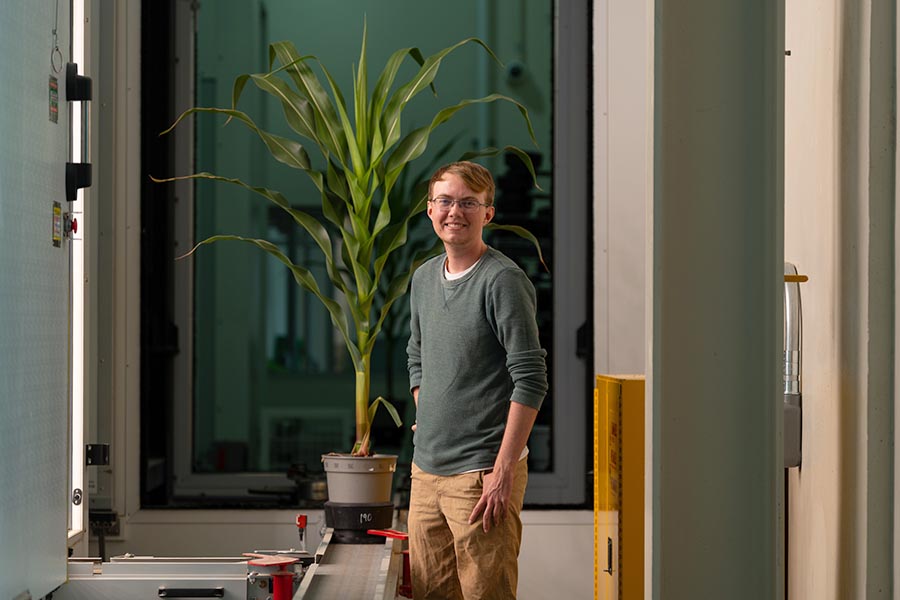
Wassgren’s advisor is Pratishtha Poudel, who joined the College of Agriculture in spring 2023.
“She’s been a great advisor,” Wassgren says. “She’s taught me so much about crop modeling and showed me a whole crop modeling community I didn’t know existed.”
With Poudel’s support, Wassgren was able to travel to San Antonio last year to present a poster at the Tri-Societies Meeting, an annual joint event of the American Society of Agronomy, the Crop Science Society of America, and the Soil Science Society of America.
“That was a really exciting opportunity that I wouldn’t have had if it weren’t for Purdue,” he says. “It’s one thing to read about stuff in a journal or an article, it’s another thing to meet the author face to face.”
One of Wassgren’s favorite things about studying at Purdue is the breadth of the campus facilities.
“I’ve had plants growing in the greenhouse, in the Ag Alumni Seed Phenotyping Facility, at ACRE [the Agronomy Center for Research and Education],” he says. “I brag all the time to my family, showing them photos – ‘look, this is my plant in the Ag Alumni Phenotyping Facility!’”
Future plans
When he’s not working, Wassgren loves playing Dungeons and Dragons and other tabletop role-playing games.
“That’s really been the way I’ve made friends and connected with people on campus,” he says. “Getting together in a big group and playing through the story together has been a really fun time.”
Wassgren hopes to go on to a PhD program, though not in West Lafayette. “Now is the time to leave and gain some new experiences elsewhere,” he says.
Perhaps he’ll at least return for Bug Bowl.

